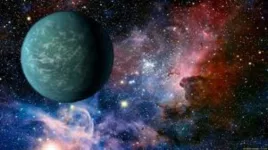Everyday we hear of newly discovered exoplanets, that have a specific mass and distance to their sun, making them candidates for harboring alien life. Scientist use models to understand how the Earth might appear as a distant life-harboring planet, to get a better insight on what could categorize a distant planet as a potential second Earth.
In 2009 a coincidence helped find a way to determine if an exoplanet might have fluid water on its surface, what scientists believe is essential for life to develop. NASA’s Lunar Crater Observation and Sensing Satellite (LCROSS) observed Earth at different phases (like the Moon phases we see from Earth) to calibrate its instruments. After analysing these data, researchers noticed that during the crescent phase, although less of Earth’s surface was visible, due to light reflecting from its oceans the planet was up to 40% brighter, in the near-infrared even 80% brighter.
Researchers caution that observing such a feature on an exoplanet would not guarantee the existence of water on its surface, clouds and ice could cause a similar effect, but it would justify taking a closer look.








